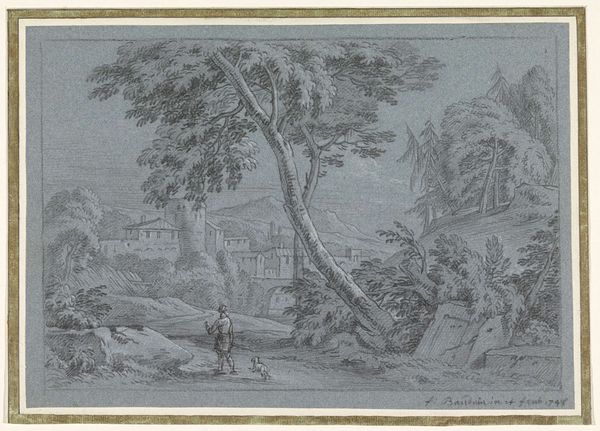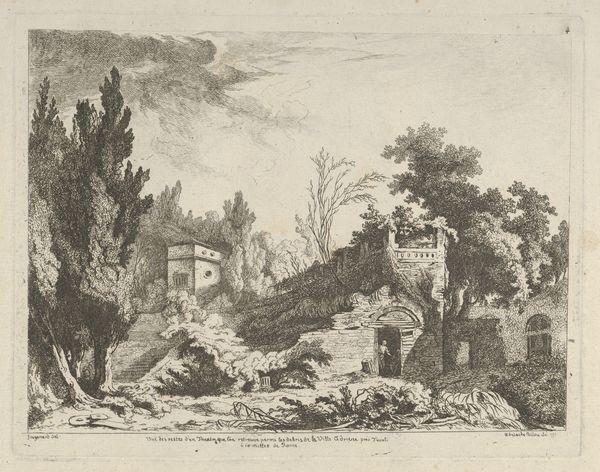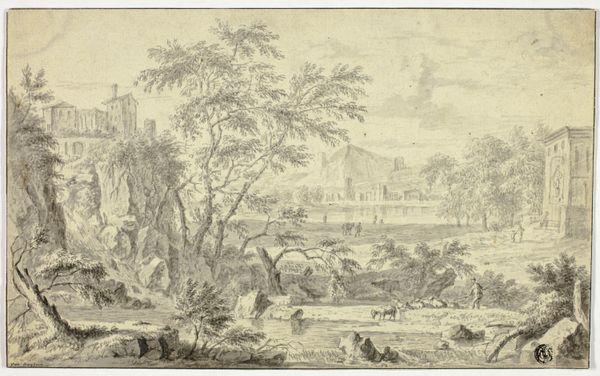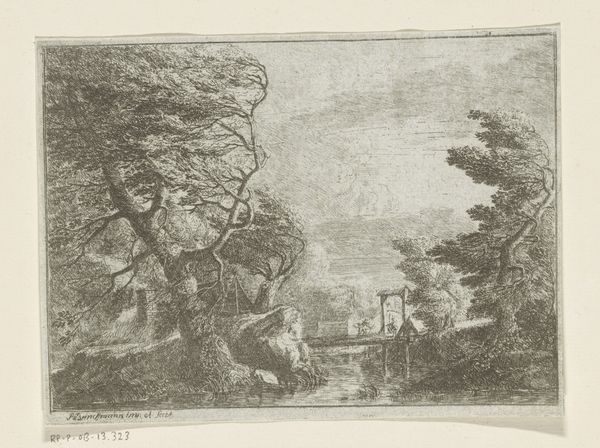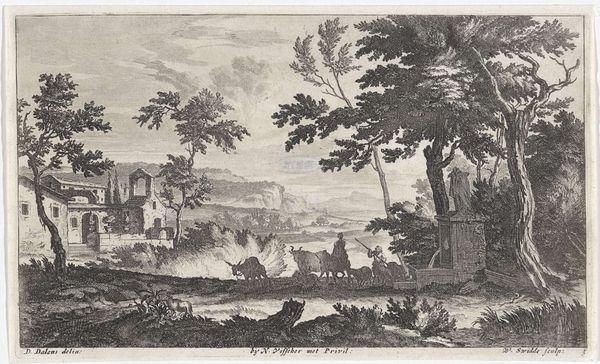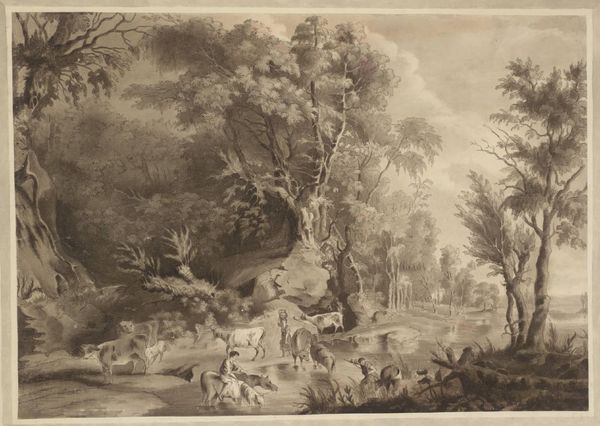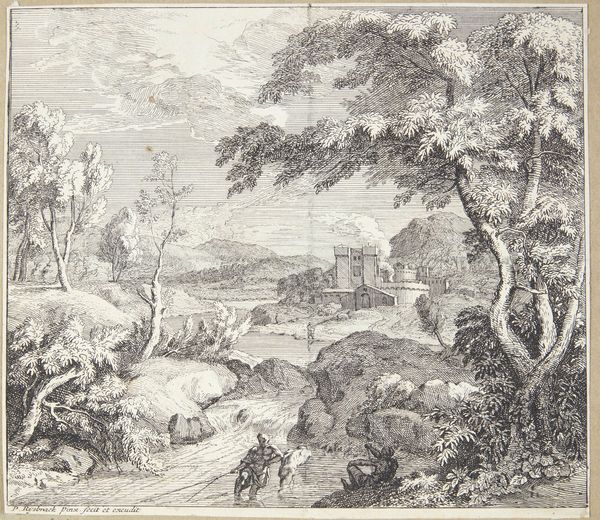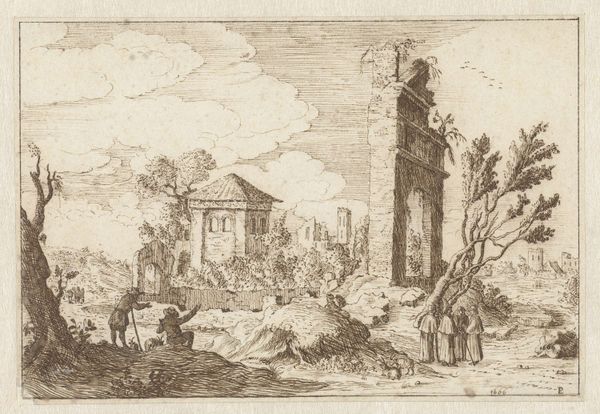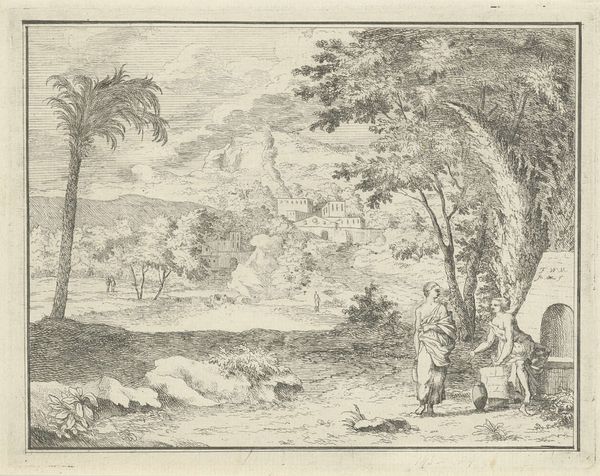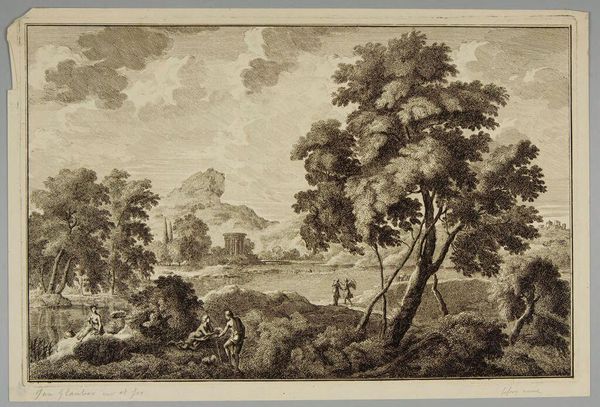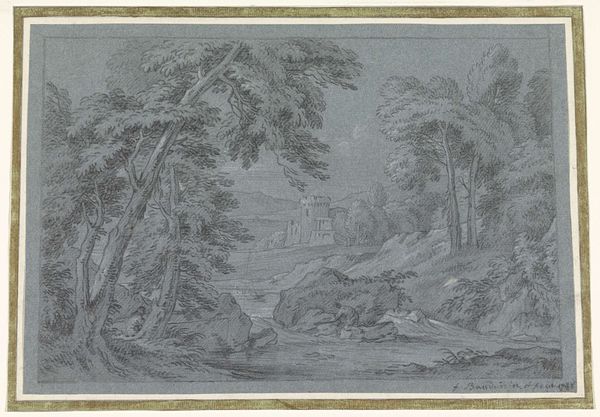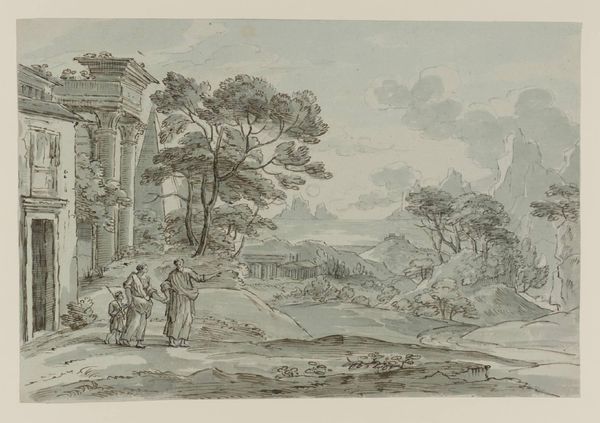
Dimensions: height 335 mm, width 478 mm
Copyright: Rijks Museum: Open Domain
Richard Wilson rendered this landscape with wash and graphite, capturing a moment of divine fury. The lightning bolt, a stark white line, cleaves the sky, an ancient symbol of power and sudden revelation, often associated with deities like Zeus or Jupiter. Consider the prostrate figures: one kneels, arms raised in supplication, while another lies struck down. This recalls countless depictions of mortals confronting the overwhelming force of the divine—a motif stretching from classical myth to Renaissance painting. Think of Caravaggio's 'Conversion of Saint Paul,' where a blinding light fells the apostle. Here, as there, the event signifies not just destruction but a potential moment of transformation. This terror, this awe before nature's might, touches something deep within us, a primal fear and respect that echoes across generations. The image resonates in a way that transcends its immediate context, tapping into a well of collective memory. The lightning's flash has persisted throughout art history, a reminder of the sublime forces that shape our world and our psyches.
Comments
No comments
Be the first to comment and join the conversation on the ultimate creative platform.
